Are you tired of your old Kwikset double-cylinder deadbolt lock and looking for a change? Or do you need to replace it because it’s worn out or damaged?
How to remove a kwikset double cylinder deadbolt lock can seem daunting at first, but with the right tools and instructions, it is a task that can be accomplished by most do-it-yourself enthusiasts. This type of lock, which requires a key for operation from both sides, is commonly used when security from entryways with glass windows is a concern. Understanding the proper process for removal not only helps in tasks such as replacement or repair but also ensures the security and functionality of your door are maintained.
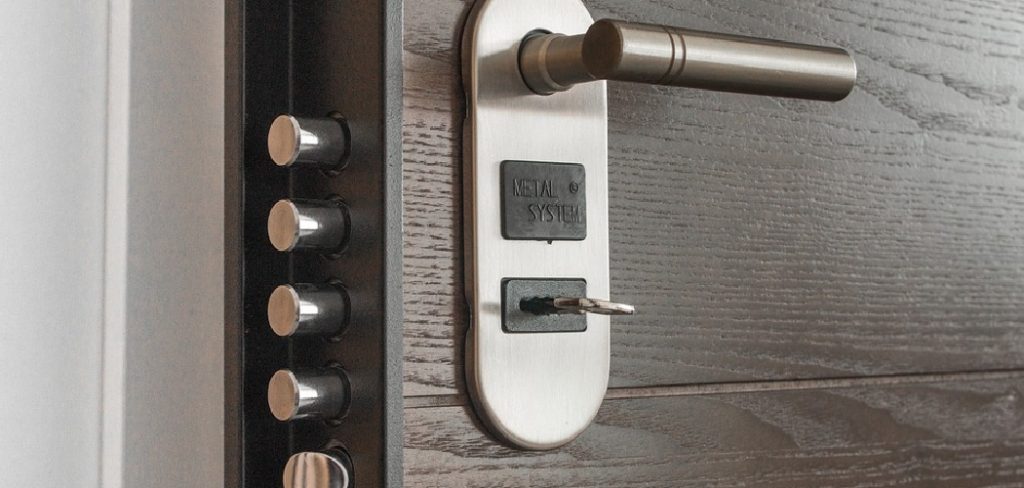
In this guide, we’ll walk you through the necessary steps and tools, simplifying the process into manageable actions.
What Will You Need?
Before beginning the process, ensure you have all the necessary tools and materials. These include:
- Screwdriver (Phillips head or flathead, depending on your lock’s screws)
- Allen wrench or hex key
- Hammer
- WD-40 or similar lubricant
- Replacement lock set (if needed)
10 Easy Steps on How to Remove a Kwikset Double Cylinder Deadbolt Lock
Step 1: Prepare the Door
Begin by making sure that the door is safely propped open. This will prevent the door from swinging and causing any accidental injuries while you’re working. Next, check that you have a well-lit environment to see the lock and all its components clearly. Set up a portable light or move a lamp close to your working area if necessary. It’s a good idea to lay a towel or piece of cloth on the floor beneath the door to catch any small parts that may drop during removal.
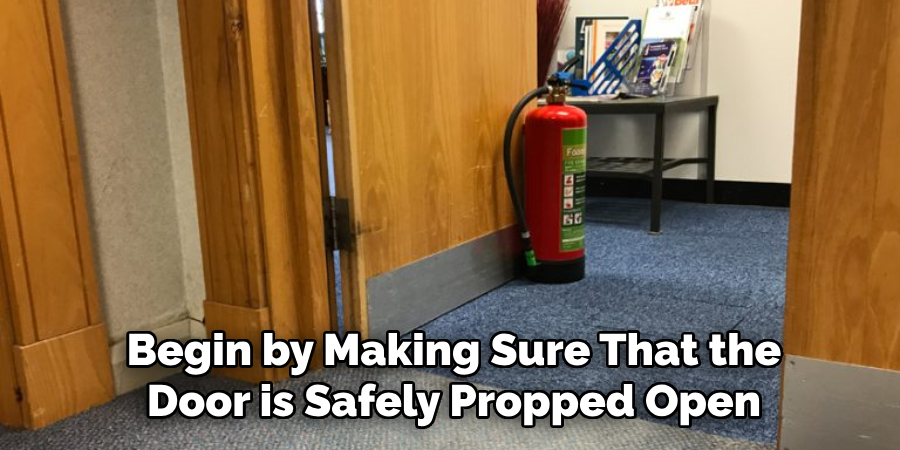
This prevents small pieces from getting lost and protects your flooring from any potential scratches. Before proceeding to the next step, ensure that children and pets are kept at a safe distance from the work area to avoid any distractions or accidents. Now that everything is prepared, you’re ready to start the process of removing the Kwikset double-cylinder deadbolt lock.
Step 2: Remove the Interior Thumb Turn
Locate the thumb turn on the interior side of the door. This part manually rotates to lock or unlock the deadbolt from the inside. Carefully unscrew the mounting hardware using your screwdriver, which connects the thumb turn to the lock mechanism. If the screws are particularly tight or have been painted over, a bit of WD-40 may assist in loosening them. Once unscrewed, set the thumb turn and screws aside in a safe place. With the interior thumb turn detached, you can now access the cylinder mechanism more easily, setting the stage for the next steps in the removal process.
Step 3: Unscrew the Interior Plate
With the thumb turn removed, you’ll notice an interior plate that covers the lock mechanism. Using the screwdriver, remove the screws securing the plate to the door. If any of the screws are stubborn, apply a small amount of WD-40 and allow it to penetrate for a minute before attempting to unscrew them again. Gently set the interior plate and screws aside with the other components you’ve already removed. This will expose the inner workings of the deadbolt, allowing you to proceed to the next step in the removal process.
Step 4: Remove the Exterior Cylinder
Now that the interior components are set aside, it’s time to focus on the door’s exterior. Locate the exterior cylinder of the deadbolt, which is the part visible from the outside of the door. Use the screwdriver to unscrew the mounting screws that hold it in place carefully. These screws are usually found on the edge of the door; however, in some designs, they might be concealed under decorative caps.
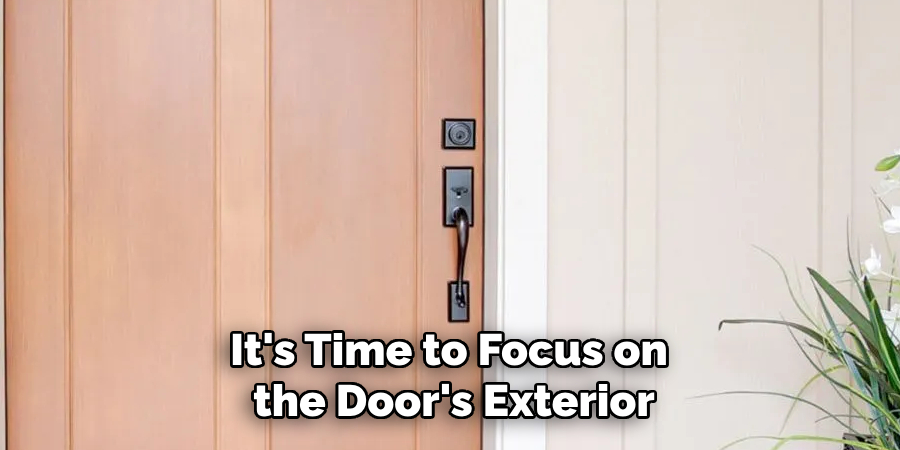
If encountering resistance, apply a small amount of WD-40 to help loosen the screws, and wait a moment before trying again. Once the screws are removed, gently pull the exterior cylinder away from the door. Keep it aside with the other hardware. At this point, you should be able to see through the hole in the door, revealing the remaining components of the lock mechanism, which you’ll address in the following step.
Step 5: Detach the Bolt Mechanism
With both the interior and exterior components removed, you can now access the bolt mechanism housed within the edge of the door. Use your screwdriver to remove the screws that secure the bolt to the door. These screws are typically located on the side edge of the door and will release the bolt once unscrewed.
If the bolt doesn’t easily slide out after the screws are removed, gently tap it with a hammer to dislodge it. Be mindful of any washers or additional small parts that may come loose during this step. Once the bolt is retracted, keep it aside along with the rest of the hardware. With the bolt mechanism removed, you have completed the main hardware removal, paving the way for cleaning the door and installing a new lock if needed.
Step 6: Remove the Strike Plate
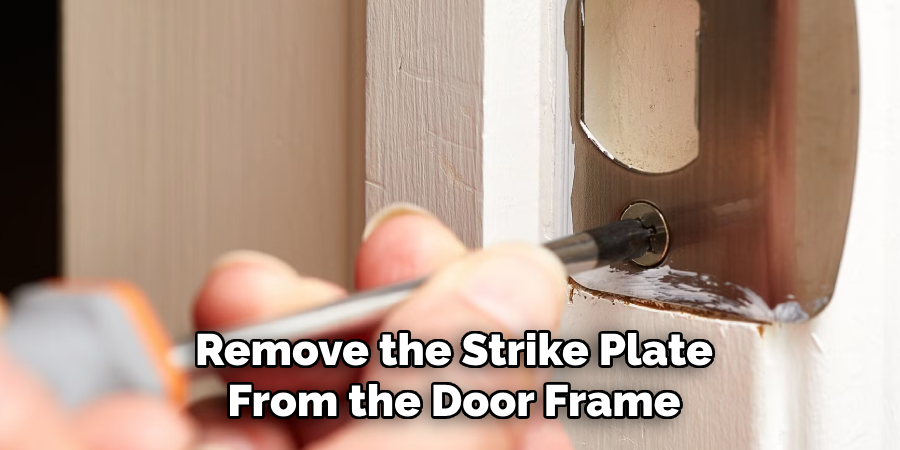
Once the bolt mechanism is disconnected, the next step is to remove the strike plate from the door frame. The strike plate is a metal piece that the bolt slides into to secure the door. Use your screwdriver to unscrew the mounting hardware holding the strike plate to the frame. If the screws are particularly tight or the strike plate is painted over, apply a small amount of WD-40 to aid in loosening them. Once removed, set the strike plate and screws aside with the other lock components. This completes the disassembly of the lock system, making it easier to install a new lock set or repair the existing door.
Step 7: Clean and Inspect the Door
With all components of the lock removed, take this opportunity to clean and inspect the areas of the door and frame that were hidden. Use a soft cloth to wipe away any dust or debris that may have accumulated. Check for any signs of wear or damage around the door and frame, such as cracks or splinters that might need attention before installing a new lock. Ensuring the area is clean and in good condition will help achieve a smooth and secure installation of a replacement lock. If necessary, use wood filler or replace any damaged parts before installing the new lock.
Step 8: Install the New Strike Plate
Before installing the new lock, you need to start by securing the new strike plate to the door frame. Line up the new strike plate with the pre-existing holes where the old one was located. This ensures the deadbolt will slide in perfectly when engaged. Use your screwdriver to fasten the screws, being careful not to overtighten them as this can warp the metal or damage the frame. If the new strike plate has any decorative covers, attach them accordingly to give a neat finish. Ensuring the strike plate is properly aligned and secured provides the foundation for a functioning and secure locking mechanism.
Step 9: Attach the Bolt Mechanism
With the new strike plate installed, proceed to attach the bolt mechanism to the edge of the door. Position the bolt within the pre-existing hole, aligning it with the door’s edge. Secure it using the provided screws, ensuring they are tightened firmly to hold the bolt securely in place. If encountering resistance or misalignment, double-check the bolt’s positioning to ensure it slides smoothly when retracting. Verify that the bolt extends and retracts effortlessly by testing it before moving on to the next step. Properly installing the bolt mechanism is crucial for the lock’s security and functionality.
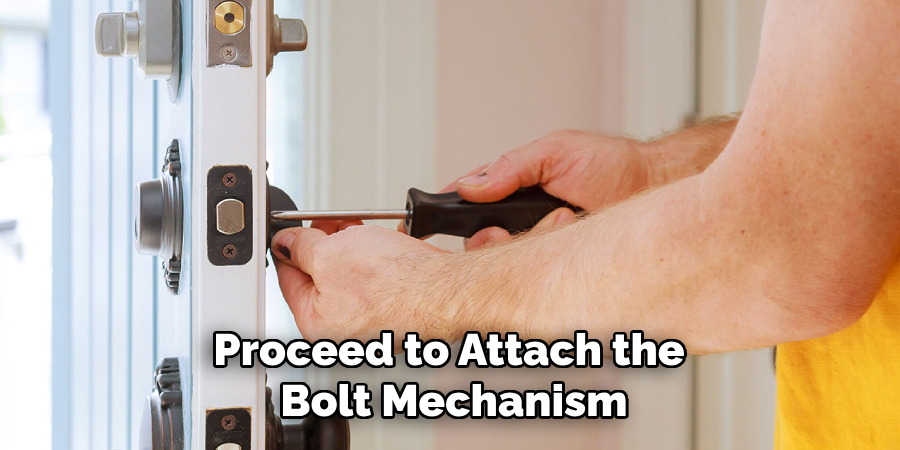
Step 10: Attach the Exterior Cylinder
Now that the bolt mechanism is firmly in place, it’s time to install the exterior cylinder. Position the new exterior cylinder on the outside of the door, ensuring that it aligns with the bolt mechanism inside. Insert the connecting bar or tailpiece through the bolt mechanism to connect the internal and external components.
Use the provided screws to secure the cylinder to the door, carefully tightening each screw to ensure stability without over-tightening. Once the exterior cylinder is secured, check that its latch operates correctly by inserting the key and turning it to verify smooth engagement with the bolt mechanism. A properly aligned and secured exterior cylinder is essential for effective lock performance and security.
By following these steps, you can successfully disassemble and remove an old door lock to prepare for a new installation or repair.
Conclusion
How to remove a kwikset double cylinder deadbolt lock involves a systematic process that ensures both safety and efficiency.
The lock can be disassembled with minimal difficulty by carefully unscrewing and detaching each component, from the exterior cylinder to the bolt mechanism and strike plate. Throughout this process, the key is to maintain the order and integrity of all parts removed, safeguarding them for potential reuse or proper disposal. Carefully cleaning and inspecting the door before reinstallation or replacement prevent future malfunctions and ensure a pristine setup.
With patience and attention to detail, removing the Kwikset double-cylinder deadbolt lock provides a seamless transition to either a new lock installation or a simple maintenance task, thereby effectively securing your property.
Edmund Sumlin is a skilled author for Metal Fixes, bringing 6 years of expertise in crafting a wide range of metal fixtures. With a strong background in metalwork, Edmund’s knowledge spans various types of fixtures, from decorative pieces to functional hardware, blending precision with creativity. His passion for metalworking and design has made him a trusted resource in the industry.
Professional Focus:
- Expert in Metal Fixtures : Edmund aesthetic specializes in creating durable and innovative metal fixtures, offering both appeal and functionality. His work reflects a deep understanding of metalworking techniques and materials.
- Sustainability Advocate : He is dedicated to using sustainable practices, ensuring that every fixture is crafted with eco-friendly methods while maintaining high-quality standards.
In his writing for Metal Fixes, Edmund provides valuable insights into the latest trends, techniques, and practical advice for those passionate about metal fixtures, whether they are professionals or DIY enthusiasts. His focus on combining artistry with engineering helps others discover the true potential of metal in design.


